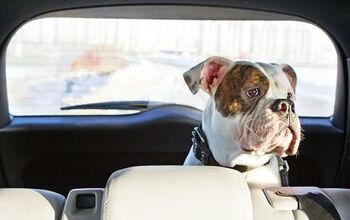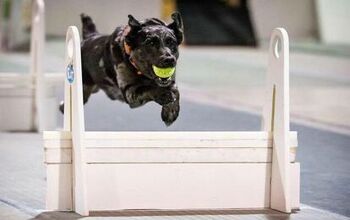5 Dog-Friendly Car Restraints Tips

What would make your annual family vacation more enjoyable? Being able to bring your dog with you! It is becoming increasingly common for dog owners to take their pets with them as they travel and, in many cases, the dogs love to be included. While traveling with your dog can be a great experience there are also some risks involved. In this article you will learn the basics about ensuring your dog’s safety when traveling by car by choosing the proper car restraint system.
Car Restraint Options for Dogs
You can’t expect your dog to sit properly in a car seat for the duration of your trip – so many open windows to stick your head out of! Many dog owners leave their dogs loose in the car, allowing them to wander back and forth between the front and back seats without any form of restraint. Failing to properly restrain your dog while he is in the car could put him at risk if you get in an accident – your dog could be thrown from the car or flung against the seat in front of him. To ensure your dog’s safety during travel, consider one of the dog restraint options:
- Hard-Sided Carrier: The traditional hard-sided carrier is one of the easiest ways to keep your dog safe during car travel. A large carrier will give your dog space to sit, stand, turn around, and lie down in comfortably but will keep him restrained so he isn’t climbing around in the car. Hard-sided carriers are ideal for small dogs and for dogs that are nervous about traveling in the car. If you choose this option, make sure your dog is crate trained and used to spending time in the crate so you don’t end up putting him through unnecessary stress.
Related: Tips For Travelling With Your Dog Over The Christmas Holidays
- Soft-Sided Carrier: A soft-sided carrier is a more portable option, especially if you have a small dog. These carriers allow you to keep your dog restrained during a car trip. If your dog and carrier are small enough, you should place it behind the front seat – this is the safest place for your dog. Putting the carrier in the front or back of the car puts it at risk for being crushed in the event of an accident since these locations are typical “crumple zones” for cars.
- Harness and Seatbelt: A harness is not just for walks – it can also be used to restrain your dog in the car by attaching it to the seatbelt. For large dogs, a harness and seatbelt option is ideal because you do not have to worry about making room for a giant carrier. A harness is safer than a collar in the event of an accident because there is a lower risk for your dog being strangled – it also distributes the force evenly across your dog’s body if you have to brake suddenly.
Related: What To Do If Your Dog Gets Sick While Traveling
- Pet Barrier: Another option for large dogs is to use a barrier that keeps your pet in the trunk or the back seat of the car. This option gives your dog some room to move around on long trips while also preventing him from being thrown around the car in the event of a sudden stop. If you choose this option, make sure the barrier you select is RTA-compliant and follow the installation instructions carefully.
- Booster Seats: If you have a small dog (up to 25-30 lbs), a booster seat can help to keep your dog restrained while also giving him a view out the window. One thing to be wary of with booster seats for dogs is that they put your dog at head height – this means that your dog could become a projectile in the event of an accident. If you use a booster seat for your dog, make sure to pair it with a harness to keep your dog safely anchored during travel.
Traveling with your dog can be a wonderful experience for the both of you but you do need to take certain precautions to make sure your dog is safe. Choosing the proper car restraint system is essential and you also need to make sure you are using it correctly. Avoid putting your dog in the front seat unless he is in a crate because he could be hurt by the air bags. If your dog is nervous about car travel, put a little bit of time into getting him used to it before you make your trip. Your dog is a member of the family and you should do everything you can to make sure he is safe and happy during car trips.

Kate Barrington is the loving owner of two cats (Bagel and Munchkin) and a noisy herd of guinea pigs. Having grown up with golden retrievers, Kate has a great deal of experience with dogs but labels herself a lover of all pets. Having received a Bachelor's degree in English, Kate has combined her love for pets and her passion for writing to create her own freelance writing business, specializing in the pet niche.
More by Kate Barrington























